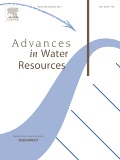Resource information
Background
: Despite recent improvements of wastewater treatment capacities in urban areas of Hanoi, Vietnam, microbial pollution is still considerable. There is a paucity of burden estimates due to gastrointestinal infection in people living along the wastewater system, and among people who are in direct contact with the wastewater, such as farmers using wastewater in agriculture and aquaculture.
Methods
: A quantitative microbial risk assessment (QMRA) was pursued focussing on four population groups characterised by different levels of exposure to wastewater: (i) workers maintaining the wastewater conveyance and treatment systems; (ii) urban farmers using wastewater from To Lich River; (iii) community members in urban areas exposed to flooding events in the districts of Hoang Mai and Thanh Tri; and (iv) peri-urban farmers in Thanh Tri district, where Red River water is used for agriculture and aquaculture. The QMRA was developed on the basis of measured concentration of Escherichia coli and Salmonella spp. and Ascaris spp. eggs in water samples. Published ratios between measured organisms and pathogenic strains of norovirus, rotavirus, Campylobacter spp., pathogenic E. coli, pathogenic Salmonella spp., Cryptosporidium spp. and Ascaris lumbricoides were employed to estimate annual risk of gastrointestinal infection and disease burden.
Results
: The QMRA estimated a disease burden of 0.011 disability-adjusted life years (DALYs) per person per year in urban farmers, 0.006 DALYs for sanitation workers, 0.0005 DALYs for urban communities at risk of flooding events and 0.0004 DALYs for peri-urban farmers. Urban farmers had considerably higher incidence estimates for gastrointestinal disease episodes per year (2.0) compared to the other exposure groups (?1.0).
Conclusions
: Urban farmers using wastewater from To Lich River have a high gastrointestinal disease burden, which is about 100 times larger than the health-based targets for wastewater use set by the World Health Organization. These findings are of direct public health relevance and call for upgrading Hanoi's wastewater system to reduce microbial contamination. Finally, this study presents a first example on how to link QMRA to a sanitation safety planning (SSP) approach in an Asian context and its findings are interesting in the frame of Sustainable Development Goal (SDGs) #6.


